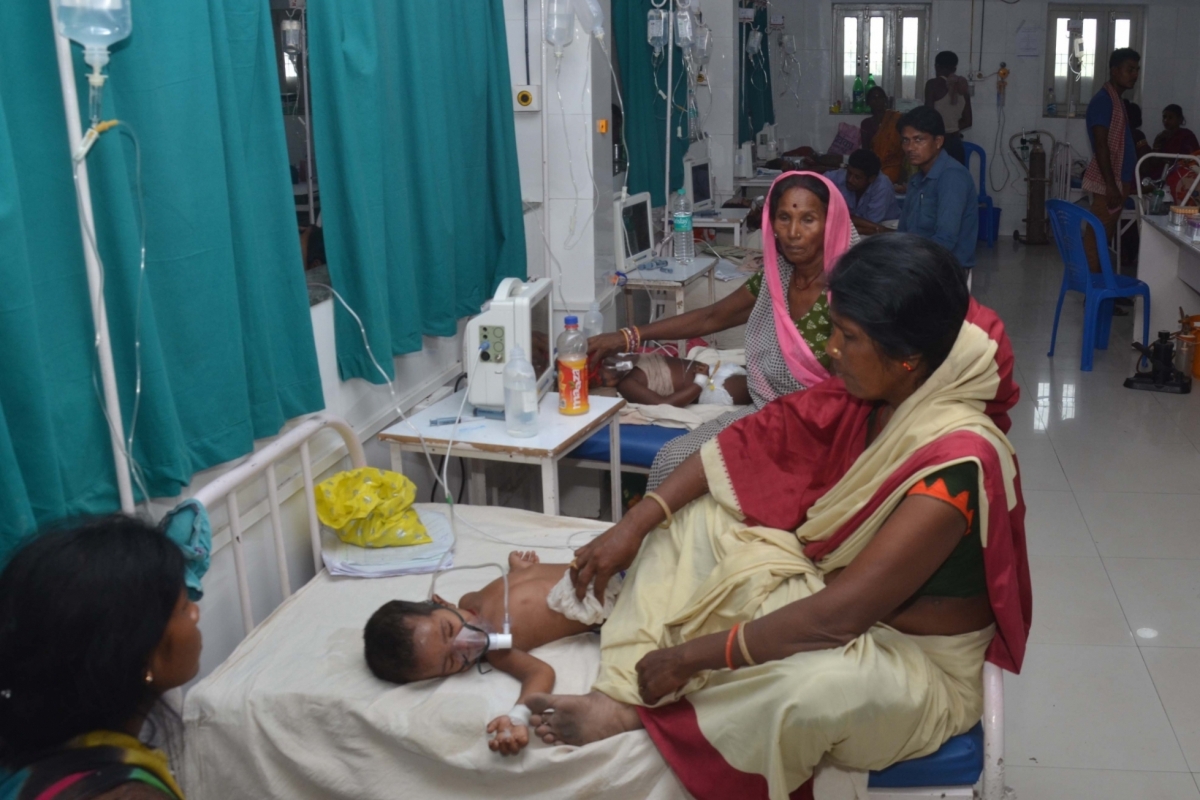Raising a kid is 18 years of prompt engineering: Musk
Raising a kid is 18 years of prompt engineering, said Tesla and SpaceX CEO Elon Musk on Wednesday.
The mystery disease has killed 118 children so far with majority of the victims from the Dalit and poor families.

Children with Acute Encephalitis Syndrome (AES) symptoms being treated at hospital in Muzaffarpur, Bihar on June 19, 2019. (Photo: IANS)
Even as luscious litchis are being blamed for deaths of children in Bihar’s Muzaffarpur district, health experts and researchers have stoutly denied the role of the fruit in the outbreak of suspected encephalitis.
The mystery disease has killed 118 children so far with majority of the victims from the Dalit and poor families.
“I have been treating the patients suffering from this disease for the past 14 years. I also conducted a research on this disease in 2005. It has nothing to do with litchis. The disease occurs primarily due to high temperature and humidity,” said Dr Gopal Shankar Sahani, head of the paediatric department with the state-run Sri Krishna Memorial College and Hospital (SKMCH) at Muzaffarpur, which has reported maximum number of deaths of children.
Advertisement
Dr JP Mandal, another paediatrician and associate professor with the SKMCH, made similar observations.
“The mystery disease has no connection with litchis. Normally, the disease appears some two months before the fruits come or end of the litchi season. So how can anyone blame litchis for this disease? This is in fact a viral disease. May be the litchi gardens are helpful for spread of this virus but it is yet to be identified,” explained Dr Mandal.
National Research Centre on Litchi director Dr Vishal Nath also asserted that litchi had no role to play in spread of this disease. He said that litchi is being blamed for no fault and that it contains no element that could, as such, harm the children – rather it is a nutrient.
“Litchis are being grown in Muzaffarpur for the past 200-300 years but this disease has come to light only recently. Several researches on litchis have found nothing against this fruit. Apart from Muzaffarpur, litchis are also grown in districts like Vaishali, Samastipur, Begusarai, Bhagalpur, Sitamarhi and East Champaran districts but the deaths of children have been reported mostly from Muzaffarpur only”, Dr Nath explained.
Explaining further, he said Muzaffarpur’s share in litchi production is roughly about 10 per cent in the country.
According to him, litchis are grown in around 30,000 hectares of land in Bihar while in case of Muzaffarpur, it is grown in some 10,000 hectares of land. As far as India is concerned, it is grown in some one lakh hectares of land.
“The big question now is why children in other parts of the country not falling sick after eating litchis? Bihar only contributes to just one-tenth of litchi production,” he asked.
A silver lining is that despite all such “rumours”, litchi farming has been only partially affected. Majority of farmers are still engaged in it since it is a cash crop which earns them good amount every year.
Bholanath Jha, litchi grower, blamed mango lobby for such rumours against litchis.
“Litchis are being blamed for this disease under part of a conspiracy. Mango lobby is involved in this conspiracy. While mango remains available at barely Rs 30-40 a kg, litchi is sold at the rate of Rs 200-250 a kg depending on their quality. Bihar exports litchi and hence repeated attempts are being made to discourage litchi farmers,” he alleged.
Advertisement